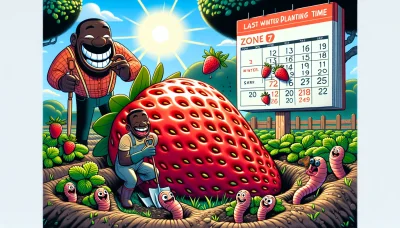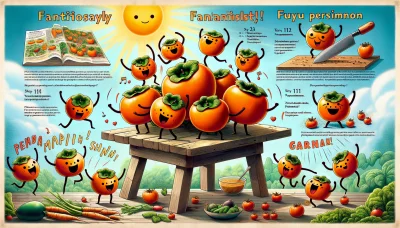What are pawpaws Quiz
Test Your Knowledge
Question of
What Are Pawpaws?
Pawpaws, scientifically known as Asimina triloba, are a small deciduous tree native to the Eastern United States and Canada. They belong to the Annonaceae family, which is primarily tropical and includes the likes of custard apples and cherimoyas. Pawpaws are unique in their family for being temperate fruit trees, thriving in hardiness zones 5 through 9. The trees are known for their large, droopy, dark green leaves, which turn a striking yellow-gold in fall. In spring, they produce dark brown to purple flowers, which have a distinct, yeasty smell. These flowers give way to large, green fruits that resemble mangoes in shape and size. The fruit's flesh is custard-like, sweet, and rich, often compared to bananas or mangoes in flavor. Pawpaws have a relatively short shelf life, which contributes to their rarity in commercial markets, despite their growing popularity among foragers and gourmet chefs.
The History of Pawpaws
The pawpaw, a fruit native to the eastern United States, has a rich history deeply intertwined with the indigenous cultures and early American settlers of the region. Known scientifically as Asimina triloba, the pawpaw has been a significant food source for centuries due to its nutritious and energy-rich fruit. Indigenous peoples not only consumed the fruit but also used parts of the pawpaw tree in various medicinal practices. The tree's bark, leaves, and fruit were utilized to treat ailments and serve as insect repellent, showcasing the pawpaw's versatility beyond its nutritional value.
As European settlers arrived, they quickly adopted the pawpaw into their diets and agricultural practices, often with the guidance of Native American tribes. The fruit's custard-like texture and tropical flavor, reminiscent of bananas and mangoes, made it a popular treat. George Washington and Thomas Jefferson were among the early American figures who favored the pawpaw, with Jefferson even cultivating them at Monticello. The pawpaw's historical significance is further highlighted by its use as a food source for Lewis and Clark on their expedition, demonstrating its role in American exploration and expansion.
How to Grow Pawpaws
Pawpaws, with their tropical-like fruit yet temperate growth habits, are a unique addition to any garden. To successfully grow pawpaws, there are a few basic requirements to keep in mind. Firstly, pawpaws thrive in well-drained, fertile soil that is slightly acidic to neutral in pH. They require a climate that offers a cold period necessary for dormancy, but with frost-free springs to protect their delicate blossoms. When it comes to sunlight, young pawpaw trees benefit from partial shade, which mimics their natural understory beginnings, but mature trees need full sunlight to produce fruit abundantly. With the right conditions, growing pawpaws can be a rewarding endeavor for any gardener.
Caring for Your Pawpaw Trees
- Planting: Choose a sunny to partly shaded spot with well-draining soil. Ensure adequate space between trees for air circulation.
- Watering: Water young trees regularly to keep the soil moist but not waterlogged. Mature trees are more drought-tolerant but benefit from occasional watering during dry spells.
- Fertilizing: Apply a balanced fertilizer in early spring before new growth begins. Avoid over-fertilizing, which can harm the tree.
- Mulching: Apply a 2-3 inch layer of organic mulch around the base of the tree to retain moisture, regulate soil temperature, and reduce weed competition.
- Pruning: Prune in late winter to remove dead or crossing branches and to maintain a strong structure. Pruning also encourages better fruit production.
- Pest and Disease Management: Monitor for pests and diseases. Use appropriate organic or chemical controls only as necessary, following label instructions.
- Harvesting: Harvest pawpaws when they are soft to the touch and have a strong, pleasant aroma. The fruit typically ripens in late summer to early fall.
Pawpaw Varieties
| Variety | Characteristics | Best Uses |
|---|---|---|
| Sunflower | Self-fertile, large fruit, sweet and rich flavor | Fresh eating, smoothies |
| Pennsylvania Golden | Medium to large size, golden flesh, excellent flavor | Fresh eating, desserts |
| Mary Foos Johnson | Early ripening, custard-like texture, sweet taste | Baking, fresh eating |
| Mango | Large fruit, firm flesh, mango-like flavor | Fresh eating, jams, baking |
| Shenandoah | Large, creamy fruit, mild and sweet | Fresh eating, smoothies, ice cream |
Harvesting and Using Pawpaws
Pawpaws, with their tropical flavor reminiscent of bananas and mangoes, are North America's largest native fruit and a delightful treat to forage. Knowing when they are ripe is crucial for the best taste and texture. Ripe pawpaws will yield slightly to gentle pressure and may exhibit a more pronounced yellow or brown color. The fruit should detach easily with a light twist; if it resists, it's likely not ready. After harvesting, consider using pawpaws promptly as they spoil quickly. They can be eaten fresh or incorporated into various recipes. Pawpaws make excellent additions to smoothies, baked goods, and ice cream, offering a unique flavor that's both exotic and familiar. For those looking to preserve the taste of pawpaws, consider making pawpaw jam or freezing the pulp for later use.
Benefits of Pawpaws in the Garden
Pawpaws, with their lush foliage and delectable fruits, offer more than just aesthetic appeal and tasty treats for humans. Planting pawpaws in the garden brings a myriad of ecological benefits that contribute to a healthier, more vibrant ecosystem. One of the key advantages is their ability to attract a variety of wildlife. The pawpaw tree serves as a host plant for the zebra swallowtail butterfly, providing a safe haven for these pollinators to lay their eggs and for caterpillars to feed on its leaves. This relationship not only supports the lifecycle of these beautiful butterflies but also aids in the pollination of plants and the overall health of the garden. Furthermore, the fruits of the pawpaw tree attract different bird species, offering them a nutritious food source. By integrating pawpaws into the garden, gardeners can play a crucial role in supporting biodiversity, creating habitats for various creatures, and promoting a balanced, sustainable ecosystem.












